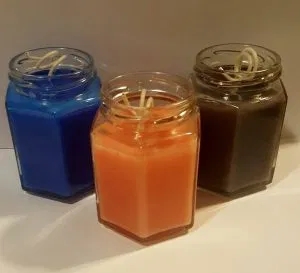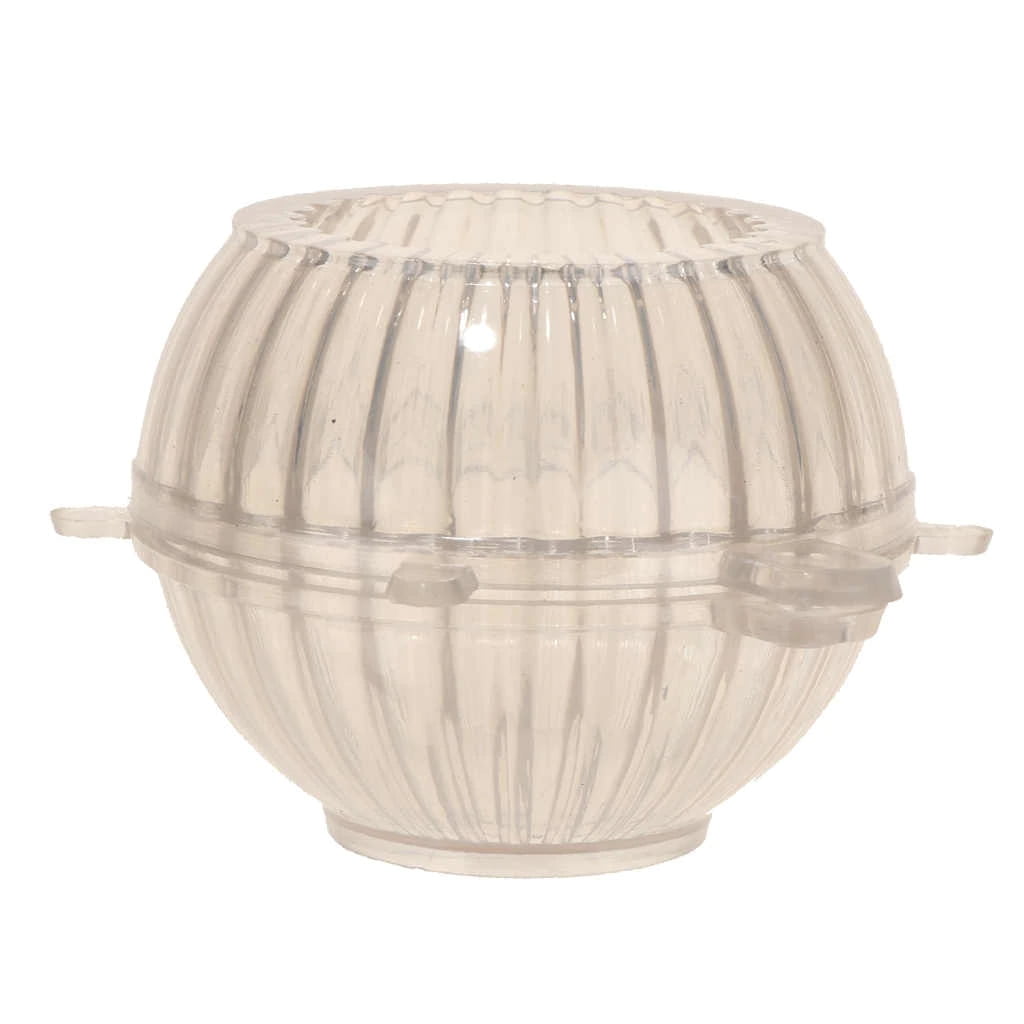Candle making is an ancient art and science that continues to evolve with modern techniques and safety standards. One important element to consider in the candle making process is the flashpoint of fragrance oils. The flashpoint refers to the temperature at which a fragrance oil can ignite or produce a flammable vapor. Understanding this concept is crucial for ensuring both the quality and safety of your homemade candles.
In this article, we will delve into the significance of flashpoint in candle making, from its impact on the scent throw to its role in candle safety. We will also explore how to test for flashpoint in fragrance oils, as well as offer tips for handling oils with different flashpoints. By the end of this article, you will have a comprehensive understanding of how to maximize the potential of flashpoint in your candle making endeavors.
Whether you are a novice candle maker or an experienced chandler, grasping the concept of flashpoint is essential for creating high-quality candles that burn safely and emit captivating scents. Join us as we explore the intricacies of flashpoint in candle making and unlock its potential in enhancing your craft.
Understanding the Flashpoint of Fragrance Oils
When it comes to making candles, understanding the flashpoint of fragrance oils is crucial. The flashpoint refers to the temperature at which a fragrance oil can ignite if exposed to a flame or spark. This is an important consideration for candle makers, as it impacts both the safety and performance of their products.
To better understand the flashpoint of fragrance oils, it’s important to know that different oils have different flashpoints. Some fragrance oils have a low flashpoint, meaning they can ignite at lower temperatures, while others have a higher flashpoint and are less likely to ignite. It’s essential for candle makers to be aware of the flashpoints of the fragrance oils they use and to take appropriate precautions when working with them.
In order to determine the flashpoint of a particular fragrance oil, candle makers can use a simple testing method. This typically involves heating the oil in a controlled environment and monitoring the temperature at which it ignites. By knowing the flashpoint of each fragrance oil they work with, candle makers can ensure they handle them safely and choose the right oils for their specific candle-making needs.
- Low-flashpoint oils require extra caution during handling and storage.
- Candle makers should always test their fragrance oils for flashpoint before using them in production.
- It’s important to follow proper safety guidelines when working with high-flashpoint oils as well.
Importance of Flashpoint in Candle Safety
The flashpoint in candle making is a critical factor to consider, especially when it comes to the safety of the candles produced. The flashpoint refers to the temperature at which a fragrance oil can ignite and produce a flame when exposed to an open flame or heat source. Understanding and paying attention to the flashpoint of fragrance oils is crucial for ensuring that the candles are safe for use in any environment.
When it comes to candle safety, knowing the flashpoint of fragrance oils is essential to prevent potential accidents. Using fragrance oils with low flashpoints in candle making can pose fire hazards because they are more likely to catch fire when exposed to heat or an open flame. On the other hand, fragrance oils with high flashpoints are safer as they are less likely to ignite, making them more suitable for use in candles.
In order to ensure candle safety, it is important for candle makers to carefully test for the flashpoint of fragrance oils before using them in their products. Proper testing methods and equipment should be used to accurately determine the flashpoint, allowing candle makers to make informed decisions about which fragrance oils are safe and suitable for their specific candle-making processes. Taking these precautions ultimately contributes to creating safer products for consumers and reducing potential risks associated with using candles.
| Flashpoint | Safety Level |
|---|---|
| Low | Higher risk of fire hazards |
| High | Lowers risk of ignition and safer for use |
How to Test for Flashpoint in Candle Making
Testing for the flashpoint of fragrance oils is an essential step in the candle making process. The flashpoint is the temperature at which a particular oil emits flammable vapors that can ignite when exposed to an open flame. To ensure safety and optimal performance of your candles, it is crucial to determine the flashpoint of the fragrance oils you are using.
To test for the flashpoint, you will need a simple apparatus called a “closed cup tester.” This device allows you to gradually heat a small sample of the fragrance oil until it reaches its flashpoint.
Once the sample reaches the specific temperature at which it releases flammable vapors, a small flame from an ignition source like a spark or electric current will cause it to ignite. It’s important to conduct this test in a safe and controlled environment to prevent any accidents.
It’s worth noting that different types of fragrance oils have varying flashpoints, so each one must be tested individually. A common misconception is assuming that all fragrance oils have the same flashpoint, but this is not the case. By testing each oil, you can accurately determine its proper handling and usage requirements in candle making. This information also helps in understanding how to blend different fragrance oils while considering their respective flashpoints.
| Flashpoint Testing Step | Description |
|---|---|
| Prepare Closed Cup Tester | Set up the closed cup tester apparatus according to manufacturer instructions. |
| Heat Sample Gradually | Place a small sample of the fragrance oil into the closed cup tester and slowly heat it while monitoring for any changes. |
| Observe Ignition Temperature | Note the specific temperature at which the flammable vapors from the sample ignite when exposed to an ignition source. |
Choosing the Right Flashpoint for Different Candle Types
When it comes to candle making, choosing the right flashpoint for different candle types is crucial. The flashpoint of a fragrance oil is the temperature at which it can ignite when exposed to an open flame. Different types of candles require different flashpoints to ensure optimal performance and safety. Here are some guidelines for choosing the right flashpoint for different candle types:
- Container Candles: For container candles, it is best to use fragrance oils with a higher flashpoint to reduce the risk of potential fires. Look for fragrance oils with a flashpoint above 140°F to ensure safe burning in glass or tin containers.
- Pillar Candles: Pillar candles, which are freestanding and not contained, can handle fragrance oils with lower flashpoints. A flashpoint around 130-140°F is suitable for pillar candles as they have more exposure to air and less risk of overheating.
- Tealights and Votives: Tealights and votive candles are small and typically burn in a short period of time. Fragrance oils with lower flashpoints, around 120-130°F, are ideal for these types of candles as they do not burn for long periods.
It’s important to note that while choosing the right flashpoint is crucial, other factors such as the specific formulation of the fragrance oil, wax type, and wick size also play a significant role in determining the overall performance and safety of the candle.
Understanding the specific needs of each type of candle and selecting fragrance oils with appropriate flashpoints can help enhance the overall quality, safety, and effectiveness of your handmade candles. By considering these guidelines when choosing fragrance oils, you can create candles that not only smell great but also burn safely and efficiently.
Common Misconceptions About Flashpoint in Candle Making
One common misconception about flashpoint in candle making is that a higher flashpoint means a stronger scent throw. In reality, the flashpoint of a fragrance oil has more to do with its flammability than its scent strength.
While it’s important to consider the flashpoint for safety reasons, it does not necessarily determine how powerful the fragrance will be when the candle is burning. Factors such as the concentration of the fragrance oil and the type of wax used can have a greater impact on scent throw.
Another misconception is that all fragrance oils with a low flashpoint are unsafe for use in candles. While it’s true that extra caution should be taken when working with highly flammable oils, it doesn’t mean they can’t be used at all.
With proper testing and handling techniques, fragrance oils with lower flashpoints can still be incorporated into candle making safely. It’s important to understand that different oils have different properties, and their flashpoints are just one aspect to consider when working with them.
Additionally, there is a misconception that all waxes have the same flashpoint requirements. This is not true as different types of wax have varying heat tolerances and flammability levels.
For example, soy wax typically has a lower melting point compared to paraffin wax, so the choice of wax will also influence the ideal flashpoint for fragrance oils. It’s essential for candle makers to research and understand the specific flashpoint needs of the type of wax they are using in order to create safe and effective candles.
The Relationship Between Flashpoint and Scent Throw
In candle making, the relationship between flashpoint and scent throw is crucial to understand in order to create high-quality, safe candles with optimal fragrance diffusion. The flashpoint of a fragrance oil directly impacts its ability to release its scent when the candle is burned. This section will delve into the significance of flashpoint in relation to scent throw and how candle makers can maximize the potential of their fragrance oils.
What Is Scent Throw?
Scent throw refers to the strength and diffusion of the fragrance when a candle is lit. It is determined by the quality of the fragrance oil used, as well as other factors such as wax type, wick size, and candle design. A higher scent throw means that the fragrance spreads further and is more noticeable, while a lower scent throw may result in a more subtle aroma.
The Impact of Flashpoint on Scent Throw
The flashpoint of a fragrance oil plays a significant role in determining its scent throw. Oils with a higher flashpoint tend to have a stronger scent throw, as they are able to release their fragrances more efficiently when heated. On the other hand, oils with a lower flashpoint may dissipate too quickly when burned, resulting in a weaker scent throw. It is essential for candle makers to consider these factors when selecting fragrance oils for their candles.
Maximizing Scent Throw With Flashpoint
To maximize the potential of flashpoint in enhancing scent throw, it is important for candle makers to carefully select fragrance oils with an appropriate flashpoint for their specific candle types. Additionally, using the correct amount of fragrance oil based on the flashpoint and wax type can further enhance scent throw. By understanding how flashpoint influences scent throw, candle makers can create candles that not only smell great but also provide a consistent and enjoyable olfactory experience for consumers.
Tips for Handling Fragrance Oils With Different Flashpoints
When it comes to candle making, handling fragrance oils with different flashpoints is a crucial aspect that can impact the overall safety and quality of your candles. The flashpoint of a fragrance oil refers to the temperature at which it can ignite if exposed to an open flame. Different fragrance oils have different flashpoints, and it’s essential to handle them with care to ensure a safe and successful candle-making process.
Storing and Handling High Flashpoint Oils
Fragrance oils with higher flashpoints require special handling to minimize the risk of ignition. When storing high flashpoint oils, it’s important to keep them in a cool, dry place away from direct sunlight and sources of heat. Additionally, using non-reactive containers made of glass or stainless steel can help prevent any potential reactions that could lead to ignition.
Working With Low Flashpoint Oils
Low flashpoint fragrance oils require extra caution during the candle-making process. It’s essential to mix these oils carefully and avoid exposure to sources of heat or open flames. When blending low flashpoint oils with other ingredients, such as wax or additives, it’s crucial to do so in a well-ventilated area and away from any potential fire hazards.
Using Personal Protective Equipment (PPE)
Regardless of the flashpoint of the fragrance oil being used, wearing appropriate personal protective equipment (PPE) is essential for safe handling. This may include gloves, safety goggles, and an apron to protect your skin and eyes from potential exposure to the oils. Additionally, having a fire extinguisher nearby when working with fragrance oils can provide added peace of mind in case of an emergency.
By following these tips for handling fragrance oils with different flashpoints, you can ensure the safety and quality of your candle-making process while maximizing the potential of each unique scent.
Conclusion
In conclusion, understanding and maximizing the potential of flashpoint in candle making is crucial for both the quality of the candles and the safety of those using them. The flashpoint of fragrance oils plays a significant role in determining the safety and effectiveness of a scented candle. By selecting the appropriate flashpoint for different candle types, candle makers can ensure that their products are not only fragrant but also safe to use.
It is important to note that misconceptions about flashpoint in candle making can lead to potential hazards if not properly addressed. Therefore, proper testing for flashpoint is essential to guarantee that candles are manufactured in a safe and responsible manner. Additionally, learning how to handle fragrance oils with different flashpoints is key to achieving the desired scent throw without compromising safety.
In essence, by gaining a thorough understanding of flashpoint and its significance in the candle making process, artisans can elevate their craft by creating high-quality products that are both aromatic and safe for consumers. It’s clear that when used thoughtfully and responsibly, maximizing the potential of flashpoint brings an added level of expertise and care to the art of candle making.
Frequently Asked Questions
What Is the Best Flash Point for Candles?
The best flash point for candles depends on the type of wax and fragrance used. Generally, a higher flash point is preferred to ensure safety during use. This means the candle will be less likely to ignite easily.
What Does Flashpoint Mean in Essential Oils?
In essential oils, the flashpoint refers to the temperature at which the oil can potentially ignite and produce a flame. It is important to consider this when using essential oils in products like candles or sprays to ensure safe handling and usage.
What Is the Flash Point of Wax Melts?
The flash point of wax melts varies depending on the ingredients used in their creation. Generally, paraffin wax melts have a higher flash point compared to soy wax melts, making them less likely to ignite easily. It’s important to follow safety guidelines when using any type of wax melt.

Welcome to my candle making blog! In this blog, I will be sharing my tips and tricks for making candles. I will also be sharing some of my favorite recipes.





